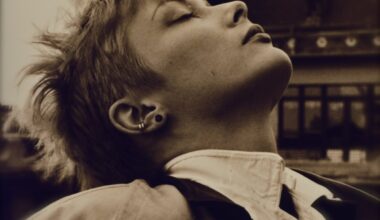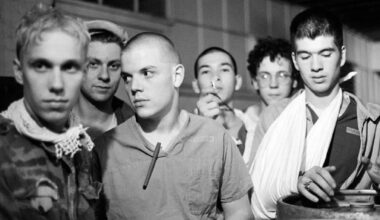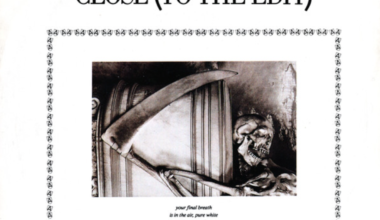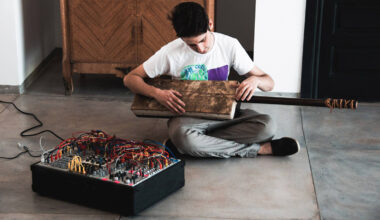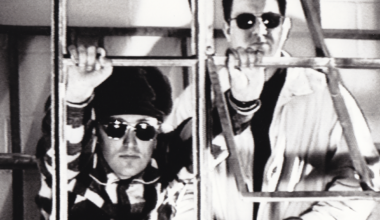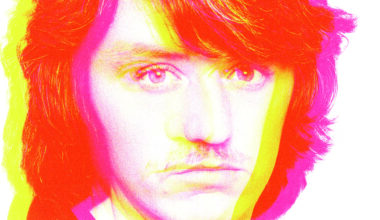A Top Five smash hit in 1979, The Flying Lizards’ ‘Money’ is a song that stands out in a crowd. Head Lizard David Cunningham tells the tale of its making
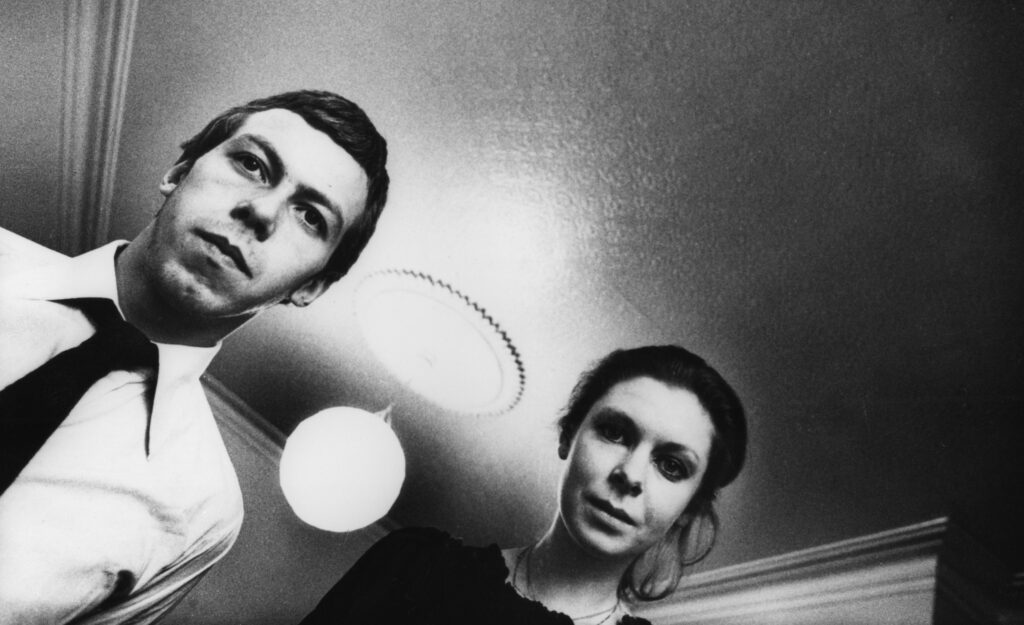
“My father hated the ‘Doctor Who’ theme, which I loved. He used to shake his head when he heard that music, he thought it was too weird. I thought it was absolutely fantastic. That and ‘Telstar’ were my introduction to eccentric, weird, popular electronic music.
“We didn’t have a record player at home, but my sister had a tape recorder that barely worked. It was this dreadful little portable thing that took three-inch reels. I got it working and became really interested in the physicality of tape, how you could make it go backwards, cut it up and stick it back together. I mostly used recordings from the radio, nothing particularly spectacular except at one point I made something a bit like the Terry Riley delay system, stringing tape between two recorders and physically watching the sound travel on the bit of tape and hearing it three seconds later.
“After school, I took up a place at art school in Maidstone, working with sound on what was one of the first time-based media courses. We had a number of part-time tutors, Stuart Marshall, who’d studied under Alvin Lucier, there was also David Toop who was replaced with Gavin Bryars. When Gavin got fed up with the job he gave it to his next door neighbour, Michael Nyman.
“If you’ve spent all day listening to experimental tape loops, in the evening you want to do something different so I worked with a few other people and one of our projects was ‘Let’s make a pop record’. I’d recorded a cover version of ‘Summertime Blues’ with Michael Upton who was one of the painting tutors, a very good painter who sadly died years ago, and Deborah [Evans], who was a fellow student with this extraordinary voice. I believe she’s a psychotherapist these days. We’ve had various huge rows so we don’t really talk…
“After I left art school I fell in with This Heat, who I really liked. I became their representative and was in the Sounds office one day, I’m not sure why, and ended up giving a journalist called Dave Fudger a demo of ‘Summertime Blues’. He then landed a job at Virgin Publishing, played my demo to [A&R director] Simon Draper and he must have thought, ‘Why not?’.
“My contract with Virgin was X-Ray Spex’s contract, you could hold it up to the light and see behind the Tipex. They got more money than me! Not much more, but it was enough to make me feel bitter and resentful. The deal was £250 for one single, but I changed it before it was signed to two singles. I thought, ‘I’ll never get another chance’. The second single was ‘Money’.
“I’m not much of a songwriter so cover versions appealed. In the mid-late 70s, both ‘Summertime Blues’ and ‘Money’ were songs that had been forgotten. Old rock ‘n’ roll records weren’t in the shops because they were deleted after a year or so, unless you owned the records those songs were on the fringe of people’s consciousness.
“I had the sheet music for ‘Money’ and so the track is basically us playing it as it came out on the record. It was me, pianist Julian Marshall and Deborah again. It was started in Julian’s flat where we had a grand piano, but not a very good one. I decided to make it more interesting by preparing it. John Cage wrote a lot of percussion pieces for prepared piano, he was very precise about where you put the object in the instrument and which objects. It’s much more beautiful than what I did, on ‘Money’ is just telephone directories spread across the strings which keeps the percussive attack, but stops the ringing.
“We started with Julian playing along with a metronome. I recorded it with a Revox, one mic on the metronome and another on the piano. I don’t think we got through the complete song, I remember editing the versions together like you would on Pro Tools. So I transferred it to a four-track and in the process I’d re-edit it to make the song longer. The master is about six minutes long. There’s an extended version too that goes sort of dub, because, well, why not?
“At the time, there was an old meat pie factory in Brixton which Acme Studios, an artists studio and housing association, were converting. There were these two huge fridges, one big one and smaller one, the smaller fridge they gave to me because nobody else wanted it. The other became This Heat’s studio. Next door to it, there was a big, empty concrete room so I took the our tape to their studio and ran a microphone and headphone cable through to the other room where Charles Haywood’s drum kit was set up for some reason.
“I recorded each drum part separately because I’m not that good a drummer. So the hi-hat and the snare are two passes and I then erased the metronome with the bass drum part. Each backing vocal was on three separate tape recorders, which I’d start all at the same point and drop them in. I could’ve done it more easily, but where’s the fun in that?
“I wasn’t deliberately trying to make it as weird and as out of time as possible, it’s mostly down to my slightly dodgy playing. I spend an awful lot of time mucking about and editing… the guitar part took an age. Each take sounded awful and then I thought, ‘Oh, I’ll do it backwards’ and that sounded alright. There’s no synths conventionally used on the track. I had – and still have – an EMS Synthi, which was quite possibly used for some extreme EQ treatment while recording and the spring reverb is definitely used in the mix, which are clearly audible on the beeps, which were made by stopping and starting a test tape on a reel-to-reel tape recorder.
“Once it was finished I did think it was better than ‘Summertime Blues’, but I don’t think I had much ambition beyond that. The real feedback started about a week after I’d delivered it to Virgin when they’d started playing it to various people. The response was almost entirely positive from everyone. Did I feel like a pop star when it took off? Not particularly, no. I remember Deborah and I going to ‘Top Of The Pops’ and we went on the tube not realising that isn’t what pop stars do apparently.”
